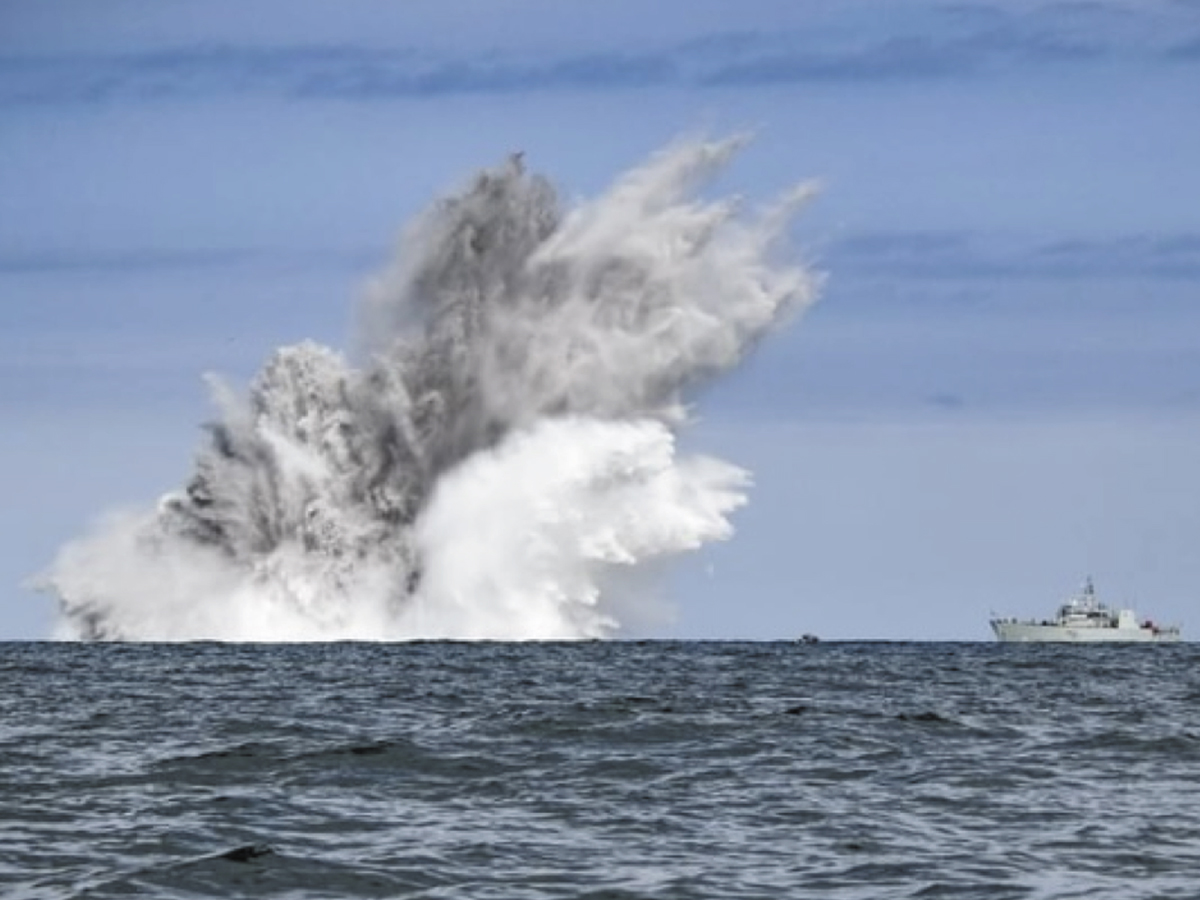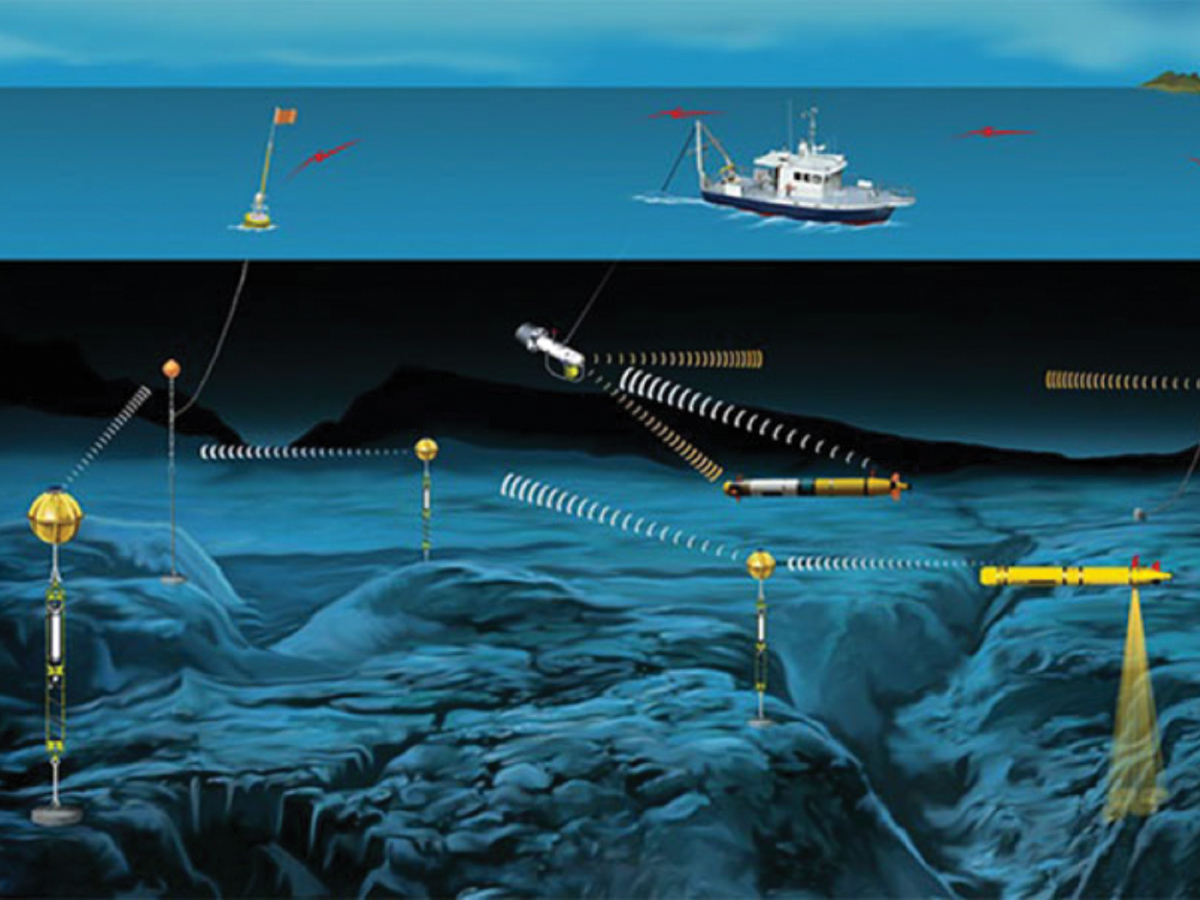Underwater drones seek and destroy mines
By Lookout Production on Mar 11, 2023 with Comments 0
Peter Mallett, Staff Writer — A new Remote Mine-hunting and Disposal System (RMDS) may soon make jobs safer and easier for Royal Canadian Navy (RCN) dive teams. Kraken Robotics, a marine technology company based in St. John’s, Nfld., has been awarded a $50-million contract to produce an RMDS system for the Department of National Defence (DND).
The underwater drone technology is intended to help the Canadian Armed Forces support Naval Mine Countermeasures operations with allies and in United Nations peace operations.
“RMDS would dramatically enhance readiness and survivability in mine-threat environments while reducing the risk of potentially losing ships and lives to a sea mine,” said Lieutenant-Commander (LCdr) George MacLean of the RCN is Directorate of Naval Requirements office and RMDS Project Director.
The RMDS system includes the ability to detect, identify and adequately dispose of a sea-mine threat from a safe distance using Autonomous and Remote Operated Vehicle (ROV) technology to depths of 200m.
Since Canadian warships regularly deploy overseas to locations where mine threats are high, the technology is a potential game-changer for deployed vessels. LCdr MacLean believes RMDS will greatly enhance safety for Canadian and allied ships currently deployed and supporting such missions as Operation Reassurance in Eastern Europe.
How it works
The RMDS system consists of two classes of Autonomous Underwater Vehicles (AUVs). A Lightweight AUV is designed for long-range deep water at depths of 100-200 metres. It has a long-life battery, making them capable of covering larger areas and can be launched from a ship’s crane or the shore.
Meanwhile, the Operator Portable AUVs, equipped with Kraken’s AquaPix synthetic aperture sonar, is designed for shallow water operations at shallower depths of 10-100 metres. The system may be deployed by as few as two operators from a ship, a small boat or from the shore.
When a mine is identified and determined that it needs disposal, a second ROV, the Sea Fox Mine Disposal System, is deployed to dispose of the mine at a safe distance from ships and personnel.
The fibre-optic guided one-shot mine disposal vehicle is equipped with sonar and on-board camera to help ship’s crews identify the mines. The mines are destroyed by a built-in large calibre-shaped charge with personnel located a safe distance away.
“This weapons system is an explosive ordnance vehicle intended for single use,” LCdr MacLean said. “It is designed specifically for mine reacquisition, identification and neutralization through explosive detonation.”
The RMDS also includes a number of Combat-variant and Training-variant Mine Disposal Systems (MDS), a Transportable Command Centre (TCC) and Computer-Based Trainer (CBT). SH Defense will provide the TCC, a containerized multi mission module system known as ‘The Cube’, which will also serve as an effector/launch and recovery system.
Karl Kenny, Kraken President and CEO, said in a statement the ‘world-class technology’ will enhance RCN collaboration with NATO allies since it leverages common technology platforms across allied fleets.
Life-saving Tech
Since the RCN presently does not have active Naval Mine Counter Measure search and rescue disposal system, the highly-dangerous job of identifying and physically disposing of potential sea mines clearing mines currently falls to naval clearance divers.
“RMDS can operate in a mine threat environment without incurring extreme risk to naval assets and personnel,” LCdr MacLean said. “The use of clearance divers is effective but extremely limited in coverage, rate and is time-consuming and very risky to personnel.”
The delivery of RMDS equipment is expected to begin in late 2024 and conclude the following year. Under the contract, Kraken will deliver remote mine-hunting and disposal systems to both CFB Esquimalt and Halifax.
Kraken has previously supplied underwater sensors, platforms, and services to a number of NATO navies, including the U.S., the UK, Australia, Denmark, Poland, and others.
The contract consists of an estimated 24-month acquisition program followed by a five-year Integrated Logistics Support (ILS) program, which includes options for additional equipment, spare parts, training and technical support said a statement by Kraken. The total value of the contract is estimated at $50 million.
Filed Under: Top Stories
About the Author:







